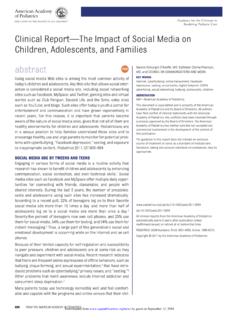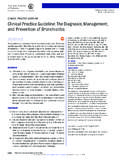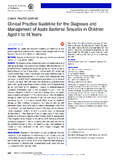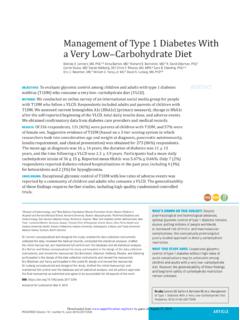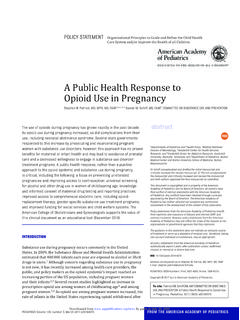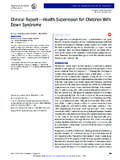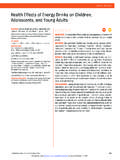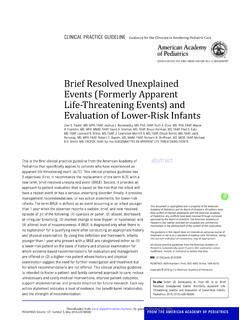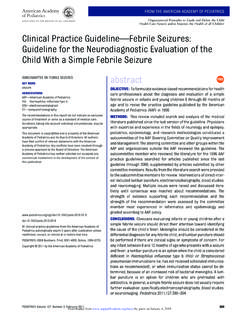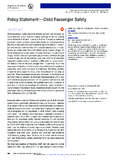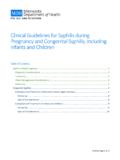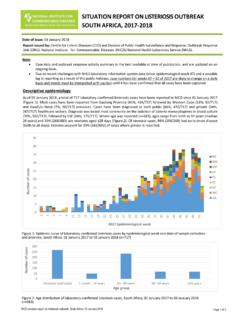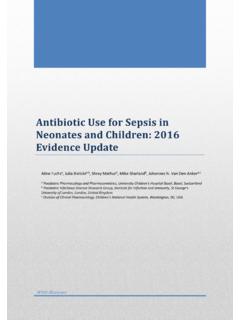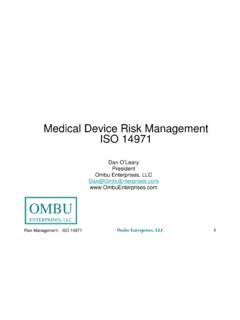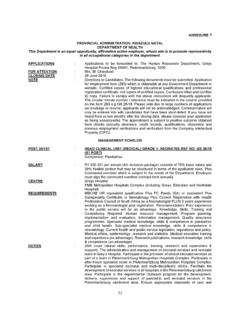Transcription of CLINICAL PRACTICE GUIDELINE Clinical Practice …
1 CLINICAL PRACTICE GUIDELINEC linical PRACTICE GUIDELINE for the Diagnosis andManagement of Acute Bacterial Sinusitis in ChildrenAged 1 to 18 YearsabstractOBJECTIVE:To update the American Academy of Pediatrics clinicalpractice GUIDELINE regarding the diagnosis and management of acutebacterial sinusitis in children and :Analysis of the medical literature published since the lastversion of the GUIDELINE (2001).RESULTS:The diagnosis of acute bacterial sinusitis is made when a childwith an acute upper respiratory tract infection (URI) presents with (1)persistent illness (nasal discharge [of any quality] or daytime cough orboth lasting more than 10 days without improvement), (2) a worseningcourse (worsening or new onset of nasal discharge, daytime cough, orfever after initial improvement), or (3) severe onset (concurrent fever[temperature 39 F] and purulent nasal discharge for at least3 consecutive days).
2 Clinicians should not obtain imaging studies of anykind to distinguish acute bacterial sinusitis from viral URI, because theydo not contribute to the diagnosis; however, a contrast-enhancedcomputed tomography scan of the paranasal sinuses should beobtained whenever a child is suspected of having orbital or centralnervous system complications. The clinician should prescribe antibiotictherapy for acute bacterial sinusitis in children with severe onset orworsening course. The clinician should either prescribe antibiotictherapy or offer additional observation for 3 days to children withpersistent illness.
3 Amoxicillin with or without clavulanate is thefirst-line treatment of acute bacterial sinusitis. Clinicians should reassessinitial management if there is either a caregiver report of worsening(progression of initial signs/symptoms or appearance of new signs/symptoms) or failure to improve within 72 hours of initial the diagnosis of acute bacterial sinusitis is confirmed in a child withworsening symptoms or failure to improve, then clinicians may changethe antibiotic therapy for the child initially managed with antibiotic orinitiate antibiotic treatment of the child initially managed.
4 Changes in this revision include the addition of a clin-ical presentation designated as worsening course, an option to treatimmediately or observe children with persistent symptoms for 3 daysbefore treating, and a review of evidence indicating that imaging isnot necessary in children with uncomplicated acute bacterial ;132:e262 e280 Ellen R. Wald, MD, FAAP, Kimberly E. Applegate, MD, MS,FAAP, Clay Bordley, MD, FAAP, David H. Darrow, MD, DDS,FAAP, Mary P. Glode, MD, FAAP, S. Michael Marcy, MD, FAAP,Carrie E. Nelson, MD, MS, Richard M.
5 Rosenfeld, MD, FAAP,Nader Shaikh, MD, MPH, FAAP, Michael J. Smith, MD, MSCE,FAAP, Paul V. Williams, MD, FAAP, and Stuart T. Weinberg,MD, FAAPKEY WORDS acute bacterial sinusitis, sinusitis, antibiotics, imaging, sinusaspirationABBREVIATIONSAAP American Academy of PediatricsAOM acute otitis mediaCT computed tomographyPCV-13 13-valent pneumococcal conjugate vaccineRABS recurrent acute bacterial sinusitisRCT randomized controlled trialURI upper respiratory tract infectionThis document is copyrighted and is property of the AmericanAcademy of Pediatrics and its Board of Directors.
6 All authorshavefiled conflict of interest statements with the AmericanAcademy of Pediatrics. Any conflicts have been resolved througha process approved by the Board of Directors. The AmericanAcademy of Pediatrics has neither solicited nor accepted anycommercial involvement in the development of the content ofthis recommendations in this report do not indicate an exclusivecourse of treatment or serve as a standard of medical , taking into account individual circumstances, may (ISSN Numbers: Print, 0031-4005; Online, 1098-4275).
7 Copyright 2013 by the American Academy of Pediatricse262 FROM THE AMERICAN ACADEMY OF PEDIATRICSO rganizational Principles to Guide and Define the ChildHealth Care System and/or Improve the Health of all Children by guest on August 28, from INTRODUCTIONA cute bacterial sinusitis is a commoncomplication of viral upper respiratoryinfection (URI) or allergic stringent criteria to define acutesinusitis, it has been observed that be-tween 6% and 7% of children seekingcare for respiratory symptoms has anillness consistent with this 4 This CLINICAL PRACTICE GUIDELINE is a re-vision of the CLINICAL PRACTICE guidelinepublished by the American Academy ofPediatrics (AAP)
8 In has beendeveloped by a subcommittee of theSteering Committee on Quality Improve-ment and management that includedphysicians with expertise in thefields ofprimary care pediatrics, academic gen-eral pediatrics, family PRACTICE , allergy,epidemiology and informatics, pediatricinfectious diseases, pediatric otolaryn-gology, radiology, and pediatric emer-gency medicine. None of the participantshadfinancial conflicts of interest, andonly money from the AAP was used tofund the development of the GUIDELINE will be reviewed in 5 yearsunless new evidence emerges thatwarrants revision GUIDELINE is intended for use ina variety of CLINICAL settings (eg, office,emergency department, hospital)
9 Byclinicians who treat pediatric data on which the recom-mendations are based are included ina companion technical report, pub-lished in the electronic for Policy Implementationhas developed a series of definitionsusing accepted health informationtechnology standards to assist in theimplementation of this GUIDELINE incomputer systems and quality mea-surement efforts. This document isavailable at: revision focuses on the diagnosisand management of acute sinusitis inchildren between 1 and 18 years of does not apply to children with sub-acute or chronic sinusitis.
10 Similar to theprevious GUIDELINE , this document doesnot consider neonates and childrenyounger than 1 year or children withanatomic abnormalities of the sinuses,immunodeficiencies, cysticfibrosis, orprimary ciliary dyskinesia. The mostsignificant areas of change from the2001 GUIDELINE are in the addition ofa CLINICAL presentation designated as worsening course, inclusion of newdata on the effectiveness of antibioticsin children with acute sinusitis,4anda review of evidence indicating thatimaging is not necessary to identifythose children who will benefitfromantimicrobial Subcommittee on management ofSinusitis met in June 2009 to identifyresearch questions relevant to guide-line revision.
